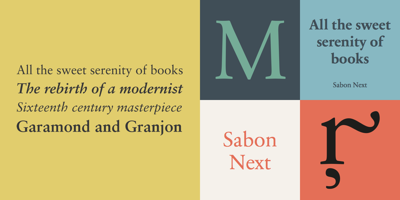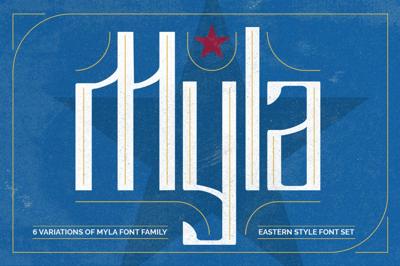Professional Design Without the Price Tag
Professional Design Without the Price Tag
Professional design no longer requires expensive software subscriptions, premium font licenses, or high-end design agency fees. The democratization of design tools and resources has created unprecedented opportunities for businesses and individuals to create sophisticated visual communications without breaking their budgets. By understanding strategic resource allocation and leveraging high-quality free font options alongside other cost-effective design solutions, anyone can achieve professional-grade results that compete effectively in today's visual marketplace.
The Myth of Expensive Design Necessity
Many businesses and entrepreneurs believe that professional design requires substantial financial investment, leading them to either compromise on visual quality or avoid design altogether. This misconception stems from outdated assumptions about design resource availability and quality.
Challenging Traditional Design Economics: Historical design production required expensive software, premium fonts, professional equipment, and specialized expertise that created significant barriers to entry. However, technological advances and open-source movements have fundamentally changed the design landscape.
Quality vs. Cost Reality: Today's free font collections, design tools, and educational resources often provide quality that matches or exceeds expensive alternatives. The key lies in understanding how to identify, combine, and implement these resources strategically rather than defaulting to premium solutions.
Professional Results Definition: Professional design is defined by effectiveness, consistency, and strategic thinking rather than tool expense or resource exclusivity. Well-executed designs using free resources consistently outperform poorly executed designs using expensive tools.
Market Perception Shifts: Customers and clients increasingly judge design quality based on results rather than production costs. Sophisticated audiences recognize good design regardless of the tools used to create it, making strategic resource utilization more important than premium tool access.
Building a Professional Design Toolkit Without Breaking the Bank
Creating comprehensive design capabilities requires strategic tool selection that maximizes functionality while minimizing costs through careful evaluation of free and low-cost alternatives.
Typography Foundation: Professional typography forms the backbone of effective design, making free font selection crucial for building comprehensive design capabilities without licensing expenses.
Google Fonts provides the most extensive collection of professional-quality free font options with reliable web optimization and comprehensive licensing that eliminates legal concerns. The service includes over 1,400 font families covering every design need from corporate communications to creative projects.
Font Squirrel curates premium-quality free font collections with verified commercial licensing that ensures professional usage rights. Their hand-picked selection focuses on quality over quantity, providing reliable options for demanding professional applications.
Adobe Fonts (included with Creative Cloud subscriptions) offers extensive premium collections that provide excellent value for designers already using Adobe software, though not technically free.
Design Software Alternatives: Professional design software traditionally required expensive subscriptions, but powerful free alternatives now provide comparable functionality for most design tasks.
Canva offers professional templates and design tools with extensive free tiers that handle most business design needs including social media graphics, presentations, and marketing materials. The platform democratizes professional design through intuitive interfaces and comprehensive asset libraries.
GIMP provides advanced image editing capabilities that rival Adobe Photoshop for most professional applications. While requiring steeper learning curves, GIMP offers comprehensive functionality without ongoing subscription costs.
Figma delivers professional user interface design and collaboration capabilities with generous free tiers that support most small business and freelance requirements. The browser-based platform eliminates software installation and update management.
Inkscape offers vector graphics capabilities comparable to Adobe Illustrator with full professional functionality for logo design, illustrations, and scalable graphics creation.
Strategic Resource Allocation for Maximum Impact
Professional design results from strategic resource allocation rather than unlimited budgets, making efficient resource utilization more important than total spending levels.
Investment Prioritization: Focus design investments on high-visibility brand touchpoints that directly impact customer perception and business outcomes. Logo design, website headers, and primary marketing materials deserve more attention than internal documents or secondary applications.
Template Development: Create professional templates using free font options and design tools that can be reused across multiple projects and applications. Templates multiply design investment value while ensuring consistency across all brand touchpoints.
Skill Development Focus: Invest time in learning design principles and software proficiency rather than purchasing expensive tools or outsourcing basic design tasks. Design education provides long-term value that benefits all future projects and business development.
Strategic Outsourcing: Outsource complex or specialized design tasks while handling routine design work internally using free tools and resources. This hybrid approach balances cost control with professional quality for challenging projects.
Professional Typography on a Shoestring Budget
Typography excellence drives professional design perception more than any other single factor, making strategic free font selection essential for budget-conscious professional results.
Building Comprehensive Font Libraries: Curate collections of free font options that cover all professional design needs including serif, sans-serif, display, and script options. Systematic curation prevents project delays while ensuring appropriate font availability for any design challenge.
Font Pairing Mastery: Master font pairing principles that create sophisticated typography systems using free font combinations. Professional font pairing knowledge often produces better results than expensive single fonts used poorly.
Hierarchy and System Development: Develop typography systems that work consistently across all brand applications using carefully selected free font families. Systematic approaches create professional consistency that rivals expensive custom typography solutions.
Technical Optimization: Implement free font options through optimized delivery systems like Google Fonts that ensure fast loading times and reliable cross-platform performance. Technical excellence contributes significantly to professional perception.
Color and Visual Strategy Without Premium Tools
Professional color strategies and visual design can be achieved using free tools and resources that provide sophisticated capabilities without subscription costs.
Color Psychology Application: Use free color palette generators and psychology resources to create sophisticated color schemes that support brand objectives and audience psychology. Understanding color theory matters more than access to premium color tools.
Brand Consistency Systems: Develop brand color systems using free design tools that ensure consistent application across all touchpoints. Systematic color application creates professional brand recognition without expensive brand management software.
Visual Hierarchy Principles: Master visual hierarchy principles that guide viewer attention through strategic use of contrast, sizing, and positioning rather than expensive effects or premium design elements.
Stock Photography Alternatives: Utilize high-quality free stock photography resources like Unsplash and Pexels that provide professional imagery without licensing fees. Strategic photography selection significantly impacts design quality and professional perception.
Content Strategy for Professional Presentation
Professional design extends beyond visual elements to include content strategy and presentation that maximizes impact through strategic communication rather than expensive production values.
Writing and Messaging: Invest in clear, professional writing that communicates value propositions effectively. Well-written content presented with strategic typography often outperforms elaborate designs with poor messaging.
Information Architecture: Organize content logically through clear hierarchies and intuitive navigation that demonstrate professional thinking and user consideration. Good organization costs nothing but significantly improves user experience.
Consistency and Standards: Develop and maintain consistent presentation standards across all communications using free tools and resources. Consistency demonstrates professionalism more effectively than expensive but inconsistent design approaches.
Web Design on a Budget with Professional Results
Professional web presence requires strategic approaches that maximize visual impact and functionality while minimizing development and hosting costs.
Platform Selection: Choose web platforms that provide professional capabilities with minimal ongoing costs. WordPress, Squarespace, and similar platforms offer sophisticated design options that rival expensive custom development.
Template Customization: Customize professional templates using free font options and strategic modifications rather than building completely from scratch. Well-customized templates often perform better than expensive custom designs.
Performance Optimization: Implement performance optimization techniques that ensure fast loading times and excellent user experience using free tools and resources. Technical performance significantly impacts professional perception and business results.
Mobile-First Design: Prioritize mobile optimization using responsive design principles and testing tools that ensure professional presentation across all devices without expensive development resources.
Print Design Excellence Without Premium Resources
Professional print design remains accessible through strategic resource utilization and understanding of print production requirements rather than expensive software or premium fonts.
Print-Optimized Font Selection: Choose free font options that perform excellently in print applications with proper spacing, contrast, and readability characteristics. Many free fonts provide print quality that matches premium alternatives.
Layout and Composition: Master layout principles that create professional print presentations using free design software and careful attention to typography, spacing, and visual hierarchy.
Print Production Knowledge: Understand print production requirements including color modes, resolution, and file formats that ensure professional results without expensive pre-press services or corrections.
Cost-Effective Printing: Research printing options that provide professional quality at reasonable costs through digital printing, online services, and bulk ordering strategies that maximize print quality while controlling expenses.
Building Professional Design Systems
Systematic approaches to design create professional consistency and efficiency that rivals expensive design agency capabilities while providing long-term value and scalability.
Brand Guidelines Development: Create comprehensive brand guidelines using free font selections and design standards that ensure consistent professional presentation across all applications and team members.
Template and Asset Libraries: Develop libraries of reusable design elements, templates, and assets that streamline future design work while maintaining professional quality and brand consistency.
Workflow Optimization: Establish efficient design workflows that maximize productivity and quality using free tools and systematic approaches that reduce time investment while improving results.
Quality Control Systems: Implement quality control processes that ensure professional standards across all design applications without requiring expensive review or approval systems.
Measuring Professional Design Impact
Professional design effectiveness should be measured through business impact and audience response rather than production costs or tool sophistication.
Performance Metrics: Track engagement, conversion rates, and business outcomes that demonstrate design effectiveness rather than focusing solely on aesthetic preferences or production methods.
Customer Feedback: Collect customer and audience feedback about design quality, professionalism, and effectiveness to validate design approaches and identify improvement opportunities.
Competitive Analysis: Compare design quality and effectiveness against competitors to ensure professional standards while identifying differentiation opportunities that don't require premium resource investments.
Return on Investment: Calculate design investment returns through improved business performance, customer acquisition, and brand recognition that justify design resource allocation decisions.
Future-Proofing Budget-Conscious Design
Professional design strategies must adapt to changing technology and market conditions while maintaining cost-effectiveness and quality standards.
Skill Development Investment: Continuously invest in design skill development that provides long-term value regardless of tool changes or market evolution. Design knowledge appreciates over time while tool investments depreciate.
Technology Trend Awareness: Stay informed about emerging design technologies and free font resources that provide new capabilities without increasing costs. Early adoption of free resources often provides competitive advantages.
Community Engagement: Participate in design communities that share resources, knowledge, and opportunities for collaboration that enhance professional capabilities without direct costs.
Conclusion: Redefining Professional Design Value
Professional design excellence results from strategic thinking, systematic execution, and creative problem-solving rather than expensive tools or premium resources. The most successful designers and businesses understand that professional quality comes from understanding principles and applying them consistently rather than access to exclusive resources.
The democratization of design tools and free font resources has created unprecedented opportunities for anyone to achieve professional results regardless of budget constraints. Success requires commitment to learning, systematic resource utilization, and focus on results rather than process expenses.
Start building your professional design capabilities today using the wealth of free font options and design resources available. Professional design is no longer a luxury reserved for large budgets—it's an accessible capability that can transform any business or individual's visual communication effectiveness.
Remember that your audience judges design results, not production costs. Focus on creating effective, consistent, and strategic visual communications that serve your objectives and audience needs. Professional design without the price tag is not only possible—it's the future of accessible, democratic design excellence.


